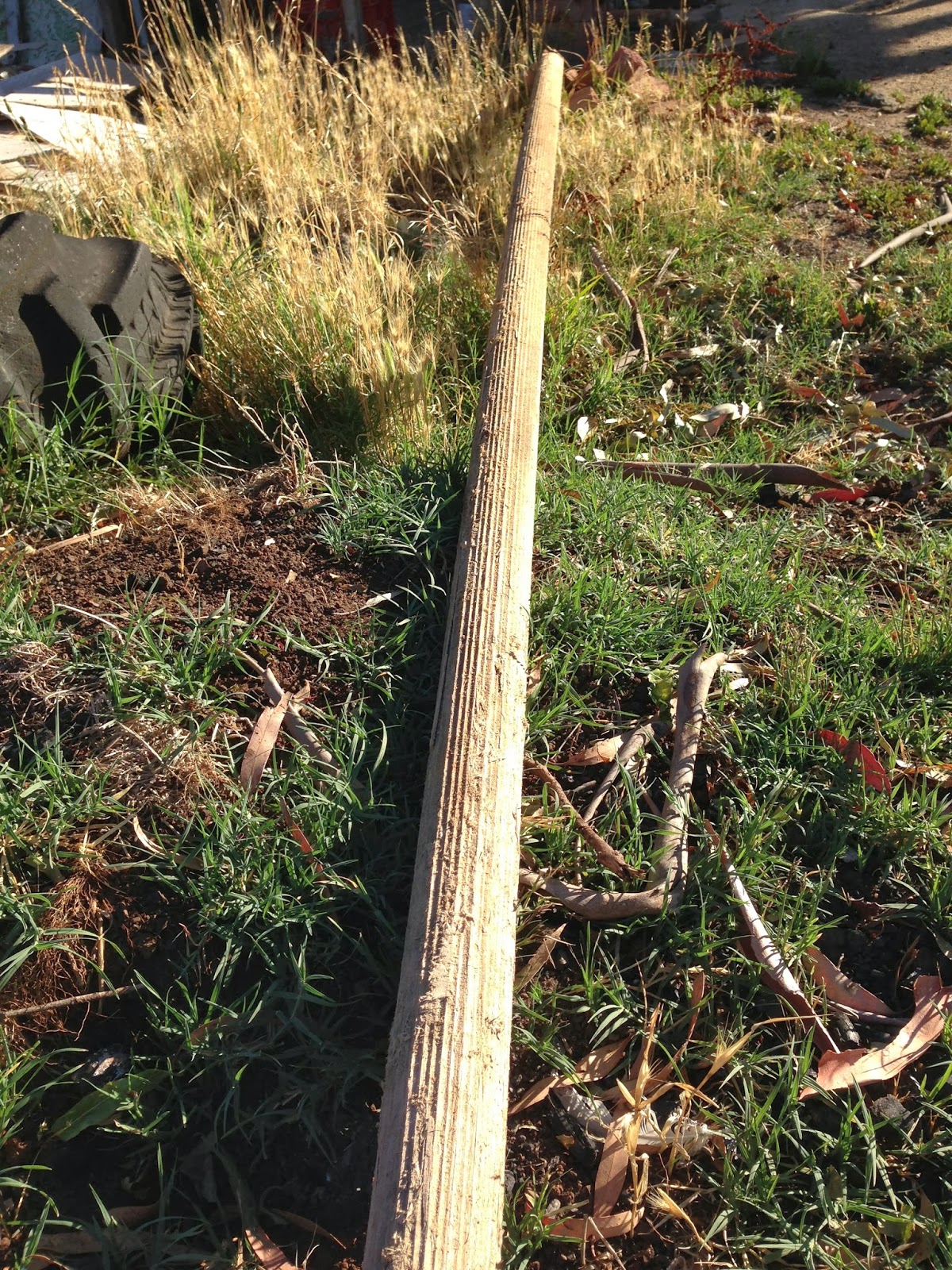As a plumber, I make a good wood worker, as someone who grew up on a farm, I make a pretty good chair. I can work with sheet metal, weld and even tinker with a motor or two. What I'm saying is I know a little bit about a fair bit of stuff, but I'm no authority on any particular subject.
So when it comes to restoring our old farm house in Tylden, I'm certainly no expert, but I believe I have a fair grasp on the direction we should be heading in sympathetically repairing the house to a point where it will reasonably last another hundred years and not look like it's been regurgitated from an Ikea catalogue.
As you may have seen last year, we have renovated the rear of the house, namely the kitchen and laundry rooms, repairing the damage left by 40 odd years of neglect and a tsunami of termites. With that structural work complete, we had to decide on the cladding for the walls. Simple, eh? There were weatherboards on it before, so just replace them with weatherboards.
Well it's not as simple as that . Yes, the main house still has the original hardwood rough sawn boards, as do some of the internal walls too. But trying to source hardwood square edged boards today proved to be near enough to impossible. It seemed every hardware store or chain I contacted either didn't not stock such a thing, or worse had not heard of such a product. Even sawmills in the area don't cut them.
It seemed that all that was available was pre-primed pink coloured Baltic Pine weatherboards, Western Red Cedar weatherboards or worse still fibre cement look alike boards. It seemed 'hard-wood' must have been too much like 'hard- work.'
Here is a snap of the original internal weatherboards that were uncovered when we removed a termite damaged original cupboard in the kitchen. The same aged boards cover the entire main house. They are as strong as the day they were nailed on. I certainly did not want flimsy baltic on the walls, nor cedar. It just was not the right choice. But I did want it to be clear to people who saw the house in it's restored state, what had been restored and what was original. To have a defined difference between the old and the new or repaired. Not pastiche.
So after a bit of um-ing and ah-ing I decided I'd look into natural or wany edged boards. I'd always liked the look of those sorts of weatherboards, having first seen them as a kid when Dad took me to Bendoc in East Gippsland to visit an old sawmiller he knew there. Jack Mustard was one of the last old time millers in the area and the side of his house was clad in these rough sawn Mountain Ash boards. The natural edge of which formed a wavy but interesting pattern and looked sort of like they had grown out of the wall.
With a bit of persistence I found a mill in Gippsland that was radially sawing natural edged boards and we secured four logs pre-sawn and ready for delivery. A few days later the logs arrived all pre-sawn and really to be opened up with the chainsaw.
As you can see from this photo, when the end is cut off the log, you are left with a log full of perfectly quarter sawn hardwood boards. They are then snapped off a centre core, formed in the milling process. This waste core or heart wood, is about 70mm round and with the exception of the pieces cut from the end of the logs, is the only waste product in the process.
Here's the waste core from the log above. And below is an example of the actual weatherboard material formed by the process. As you can see, with the method used to radially saw the logs every single board has to be quarter sawn, which means minimal shrinkage and visually no cupping or warping of the boards, which is prevalent in Pine boards, as the they are flat or rift sawn.
And here is the comparison section of new boards. Similar look, but easily identifiable as new by virtue of the their wany edge.
We haven't been out there this week as we are waiting for the new windows to arrive before we can continue to fit the weather boards.
That and the fact that Bern and I are running a 6 person Continuous Arm Chair course too. It's day 7 tomorrow and judging by the quality of the chairs the guys have produced so far, it promises to come to a great conclusion tomorrow afternoon.






















